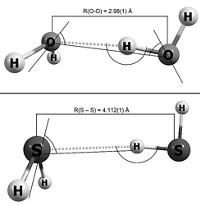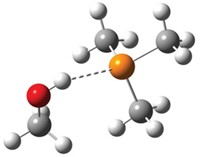Advertisement
Grab your lab coat. Let's get started
Welcome!
Welcome!
Create an account below to get 6 C&EN articles per month, receive newsletters and more - all free.
It seems this is your first time logging in online. Please enter the following information to continue.
As an ACS member you automatically get access to this site. All we need is few more details to create your reading experience.
Not you? Sign in with a different account.
Not you? Sign in with a different account.
ERROR 1
ERROR 1
ERROR 2
ERROR 2
ERROR 2
ERROR 2
ERROR 2
Password and Confirm password must match.
If you have an ACS member number, please enter it here so we can link this account to your membership. (optional)
ERROR 2
ACS values your privacy. By submitting your information, you are gaining access to C&EN and subscribing to our weekly newsletter. We use the information you provide to make your reading experience better, and we will never sell your data to third party members.
Physical Chemistry
Hydrogen Bond Images From AFM Questioned
Microscopy: “Bonds” may be artifact of tip flexibility
by Jyllian Kemsley
November 14, 2014
| A version of this story appeared in
Volume 92, Issue 46

Purported hydrogen bond interactions appearing in atomic force microscopy (AFM) images may be an experimental artifact.
AFM images published last year by a team led by Xiaohui Qiu and Zhihai Cheng of China’s National Center for Nanoscience & Technology and Wei Ji of Renmin University of China appeared to show electron density where hydrogen bonds would connect 8-hydroxyquinoline molecules (C&EN, Sept. 30, 2013, page 5).
But what the group imaged may have been caused by the interaction of the AFM tip with the potential energy surface between the molecules, according to work by a separate team led by Sampsa Hämäläinen and Peter Liljeroth of Finland’s Aalto University School of Science and Ingmar Swart of the Netherlands’ Utrecht University.
The researchers used AFM to study tetramers of bis(para-pyridyl)acetylene (BPPA) molecules. The tetramers are held together by intermolecular C–H∙∙∙N hydrogen bonds and bring two nitrogen atoms on separate molecules within 3 Å of each other. The nitrogens should have no bonding interaction, yet AFM images appear to show a bond between the atoms (Phys. Rev. Lett. 2014, DOI: 10.1103/physrevlett.113.186102).
In all of these experiments, a CO molecule is attached to the AFM tip. The CO can bend to reduce its interaction with the molecules on the surface. The bending causes ridges in the potential energy surface between atoms of different molecules to show up as sharp lines in AFM images.
“We’re not saying there can be no contribution from hydrogen bonds, but we show that you can also have contrast when there is no bond at all,” Swart says. Swart and colleagues’ results bolster theoretical work led by Pavel Jelinek of the Czech Academy of Science (Phys. Rev. B 2014, DOI: 10.1103/physrevb.90.085421).
Ji and colleagues, however, suggest that there is some charge density between the BPPA nitrogens imaged by AFM. They also did not observe linelike features between nearby N and O atoms in their hydroxyquinoline study.
The results emphasize that researchers must be cautious about interpreting highly processed microscopy images, says James K. Gimzewski of UCLA and California NanoSystems Institute. “The nano is invisible, and images of it should be treated with care,” he says.





Join the conversation
Contact the reporter
Submit a Letter to the Editor for publication
Engage with us on Twitter